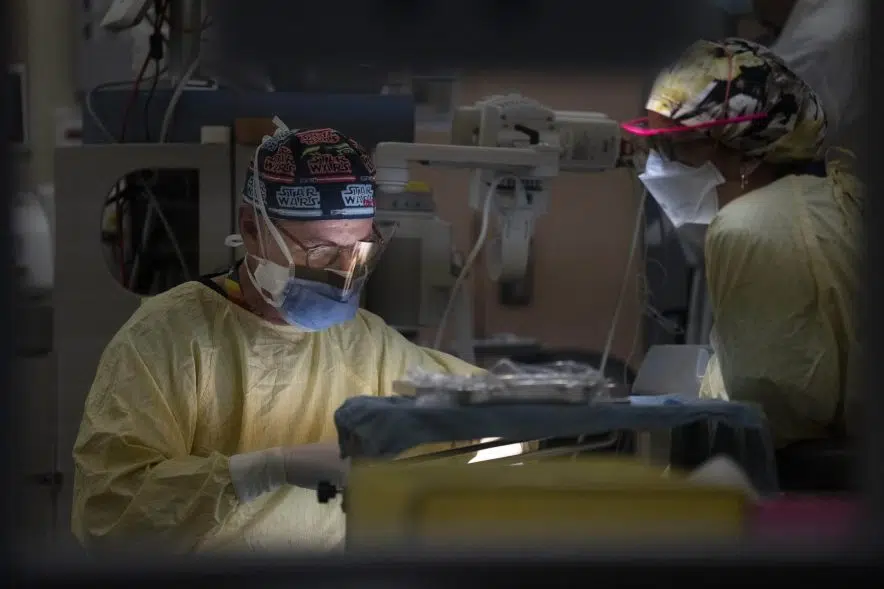The Saskatchewan government says the province’s surgical system set two records in recent months.
In a media release Wednesday, the government said a total of 24,306 surgical procedures were performed from Jan. 1 to March 31, the highest quarterly surgical volume ever recorded in the province.
As well, the province said more than 90,000 Saskatchewan people had surgeries done from April 1, 2022 to this past March 31, the highest total ever recorded in a one-year period.
The provincial government said that total includes around 1,600 more hip and knee replacement procedures in comparison to pre-COVID numbers in 2019-20, an increase of 13 per cent.
“We are thankful for the combined extraordinary efforts of our surgical teams and surgical support staff to ensure thousands more patients receive the procedures they need,” Health Minister Paul Merriman said in the release.
“This progress is welcome news as we move forward with surgical investments increasing by $42.5 million in this year’s budget. We will continue to maximize system capacity by optimizing public surgical services and expanding the involvement of private sector partners in publicly funded surgical service delivery.”
Saskatchewan’s wait list rose substantially during the COVID-19 pandemic, but the provincial government took steps in the 2023-24 budget to address it.
The increased investment in the budget is to cover 6,000 more surgeries and bring the total to be done in 2023-24 to 103,000.
That’s expected to reduce the wait list to pre-pandemic levels — getting a surgery done within one year from being placed on the list — by next March, which is one year ahead of schedule. The government’s ultimate target is to have all surgeries done within three months.
One tactic the government is planning to use is sending patients to Calgary for hip and knee procedures.
“Efforts to expand surgical capacity include long-term investment in both public surgical services and publicly funded, privately delivered centres,” the release said. “Additional short-term measures include utilizing efficiencies in operating rooms and scheduling processes as well as ensuring key staffing complements.”
The government said the investment in the surgical program for 2023-24 is nearly $670 million, a $144-million increase since 2007.







